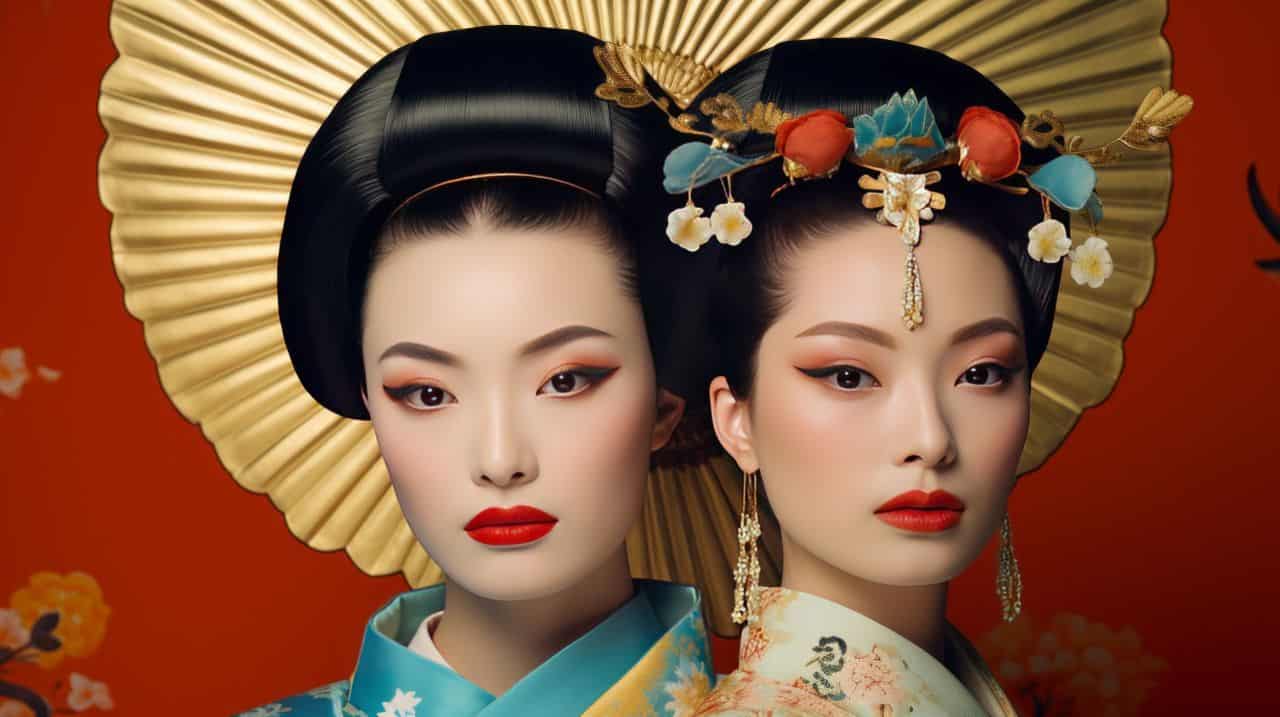Throughout history, ideals of beauty have shaped Asian cultures. They have helped shape the way women feel about themselves and their bodies.
The evolution of Asian beauty has long influenced everything from fashion to sex symbols. In this article, we’ll look at how these trends have changed over time.
Geishas
Geisha are highly-skilled entertainers who typically attend dinners and other social events to demonstrate their skills, focusing on the art of conversation, dance, and other activities. They charge their clients a flat fee for each service and usually work at an ochaya (tea house) or ryotei (traditional Japanese restaurant).
In Japan, the traditional geisha community has existed since the 18th century. They were initially male jesters who served daimyo (feudal lords), providing entertainment, if not advice on military strategies.
Today, there are two types of geisha: maiko and onna. Maiko, or apprentices, are young women who eventually undergo years of training to debut as full-fledged geisha; onna, or mature geisha, are older, more experienced geisha.
Maiko and Onna differ in several ways, including their makeup, hairstyles, and clothing. Maiko wears a kimono with brightly colored ago (bag), while onna has minimal or solid-colored ago that usually contains their business cards and dancing fans. Maikos also have high wooden sandals called kobo that prevent their kimono from slipping on the ground.
Sex Symbols
The evolution of Asian beauty has taken many forms, but one that caught the world’s attention was sex. This was primarily the result of a confluence of factors, including feminism, fashion, and technology.
The first modern sex symbol was probably the erotica-loving French model Brigitte Bardot, who was the subject of a 1950s magazine cover and became the subject of a 1956 movie. She was also the first to be named “sex kitten” that same year. Similarly, the first male sex symbol was actor Sessue Hayakawa, who played a sadistic Japanese loan shark in Cecil B. DeMille’s silent 1915 blockbuster The Cheat. He was the first to be awarded the title of “sex icon” by the White House. The rabid fans of Hayakawa were arguably white women. He was also the first to wear a wig, a feat of engineering that would be unheard of today. Visit sites like free sex cams to see more beautiful Asian women.
Kimono
Traditional kimonos are sewn by hand, and many are decorated with intricate motifs. They are made from various fabrics, including silk and a range of non-silk fabrics woven from Musa basjoo.
Some kimonos are casual and can be worn daily; others are formal. Formal kimonos are made from fine silks. Komon (Xiao Wen, meaning “small pattern”) are informal women’s kimonos with geometric patterns or non-geometric designs; some komon also show season images.
Maiko kimonos are more colorful and feature more prominent motifs that cover a greater area of the garment. Maiko apprentices often wear a maiko hikizuri, a formal kimono with large, symmetrical motifs along the hem and shoulders.
Geisha and maiko use their kimono to perform at weddings, historical dramas, and other formal events. They also use their kimono to travel and entertain guests at private homes. Maiko is usually accompanied by an Okanagan, a woman who manages the lodgings and training of the maiko.
Fashion
Beauty standards in East Asia are often a far cry from those of the West. In particular, Asian women tend to have porcelain pale skin, large Bambi eyes, and gently arched eyebrows.
Many of these aesthetics result from their cultural roots and a desire to reconnect with a past lost during European colonialism. This allows women in post-colonial East Asian countries to reclaim their identity and culture.
This is also a way to combat the narratives left over from the European colonial period that promote whiteness and idealized physical perfection. In other words, it’s a weapon that can help Asian women fight back against these harmful narratives.
One of the most recognizable icons of traditional Japanese culture is the geisha. These women perform their trade in kimonos and wear their hair in a wig.
